Значения осгудовских параметров для 1000 слов русского языка
В статье описывается методика сбора данных для формирования аффективных норм к 1000 частотным словам русского языка по параметрам arousal (интенсивность эмоциональной реакции при восприятии слова) и dominance (ощущение силы или слабости при восприятии слова). Данное исследование дополняет оценки, собранные ранее по параметру valence (позитивность/негативность слова). Оценки по трем указанным шкалам (далее – VAD) восходят к классическим параметрам факторного анализа, описанным Ч. Осгудом. Числовые показали по шкалам VAD для различных групп слов с середины XX века собираются на материале различных языков, а развитие информационных технологий и методов сбора больших данных в настоящий момент позволяет получать оценки по аффективным параметрам для широкой выборки стимульных слов. Базы данных рейтингов VAD созданы для большого набора слов английского, голландского, испанского, немецкого и ряда других языков. Подобные ресурсы являются важным источником для реализации исследований в области когнитивных наук, психолингвистики, а также в области компьютерной обротки текстов, например, в сентимент-анализе, что указывает на актуальность создания баз данных аффективных норм. Однако до настоящего исследования указанные параметры не изучались на материале объёмного списка стимульных слов русского языка. В данной работе, во-первых, подробно описывается методология сбора оценок по шкалам arousal и dominance для 1000 слов русского языка; во-вторых, описывается взаимосвязь между шкалами VAD; в-третьих, исследуется роль гендерных различий в формировании параметров по шкалам arousal и dominance; в-четвертых, анализируются особенности аффективных параметров семантической группы слов «болезни». Важным результатом является полученная база данных слов русского языка с рейтингами по параметрам VAD, выявленные корреляции между шкалами и описанные особенности оценки слов по этим параметрам. Кроме того, в статье продемонстрирована согласованность полученных нами данных с рейтингами, созданными для других языков, что указывает, с одной стороны, на надежность полученных результатов, с другой стороны, на общеязыковую тенденцию восприятия слов по аффективным параметрам.
Иллюстрации


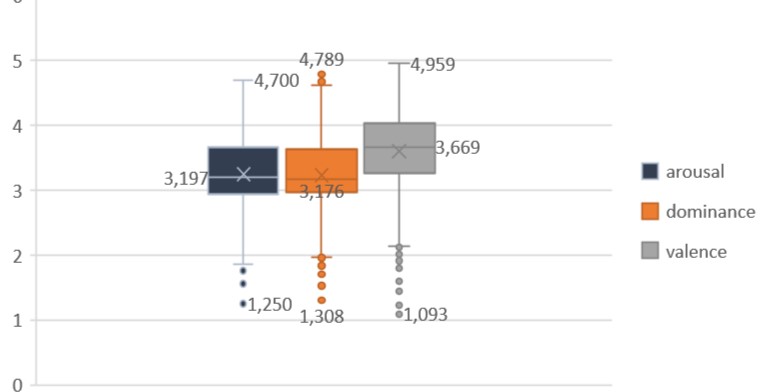
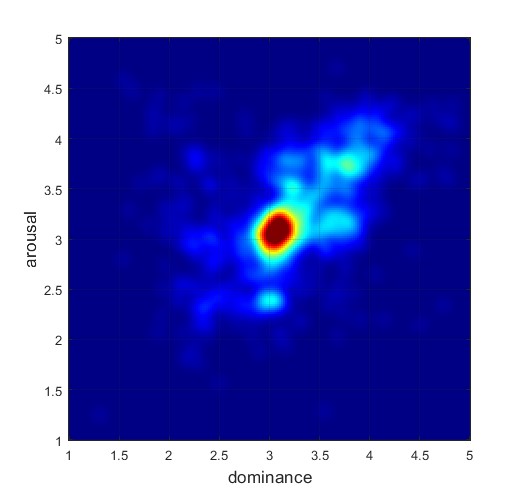
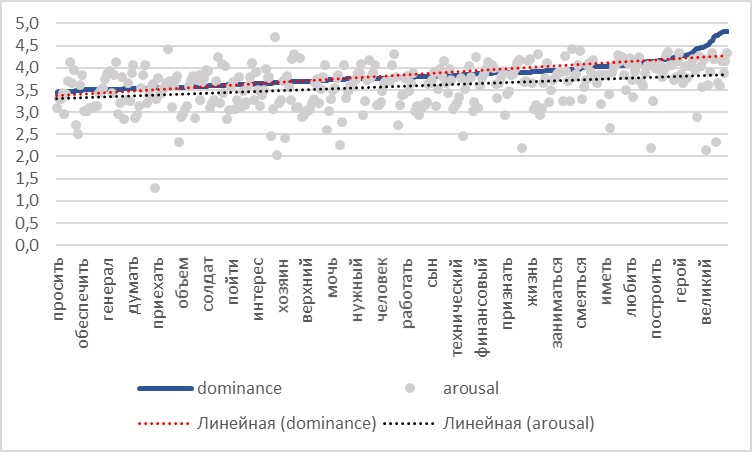
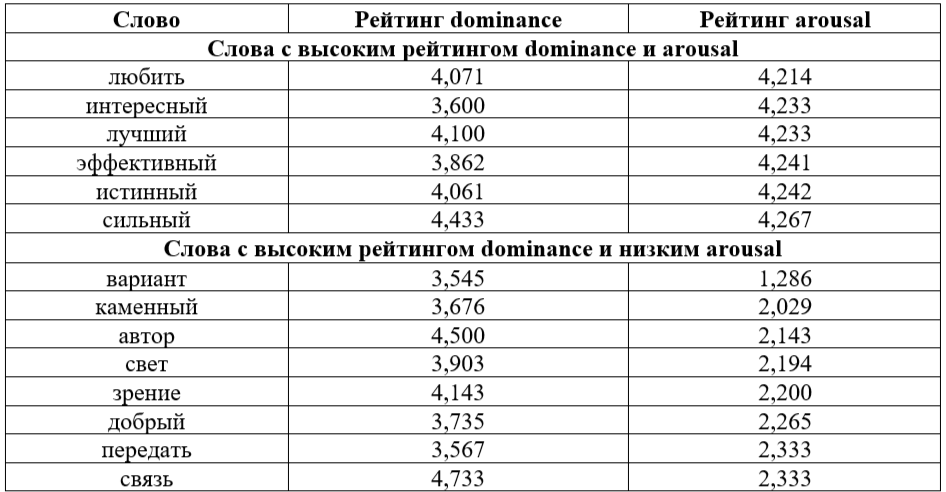
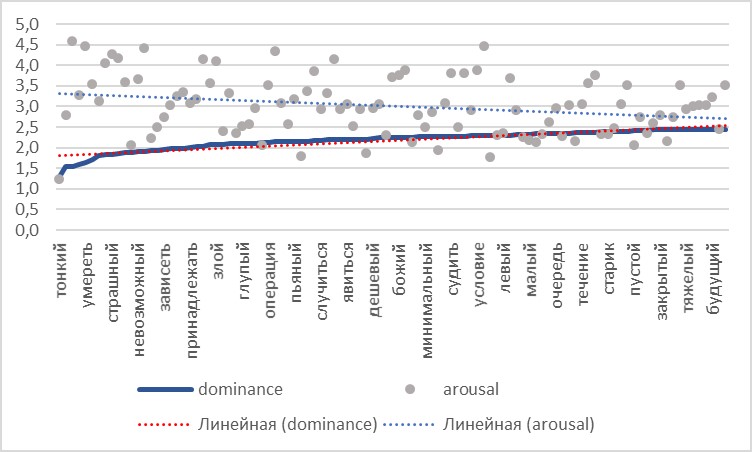
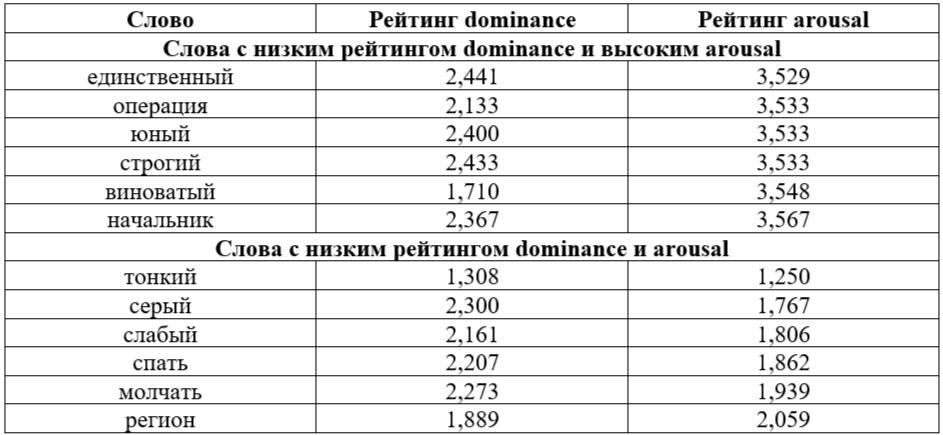
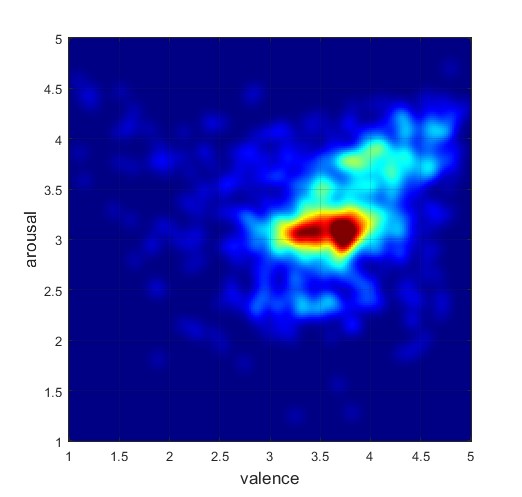
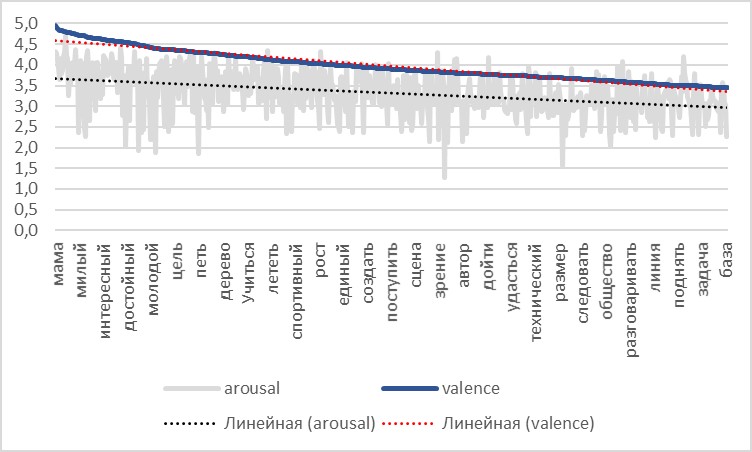
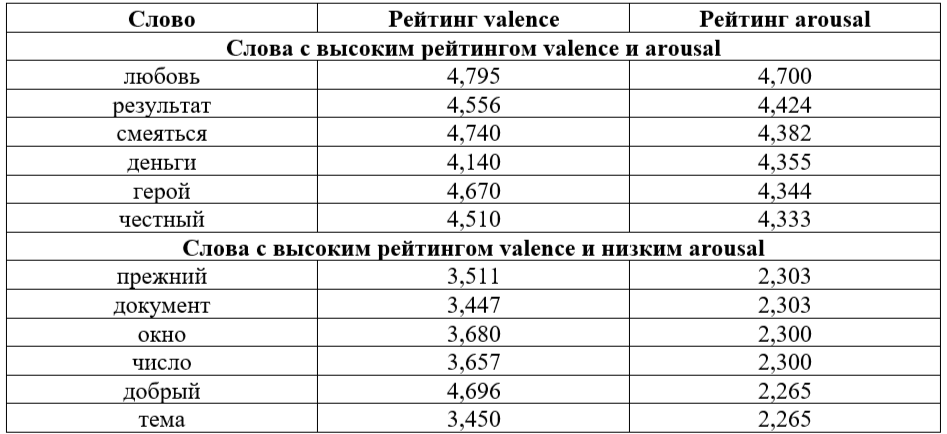
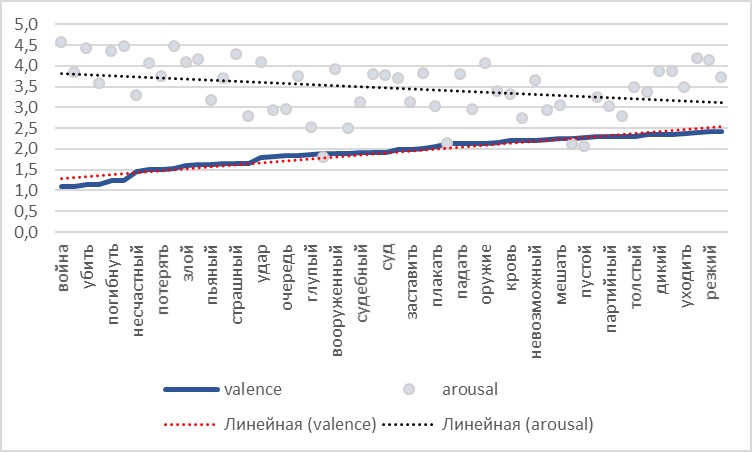
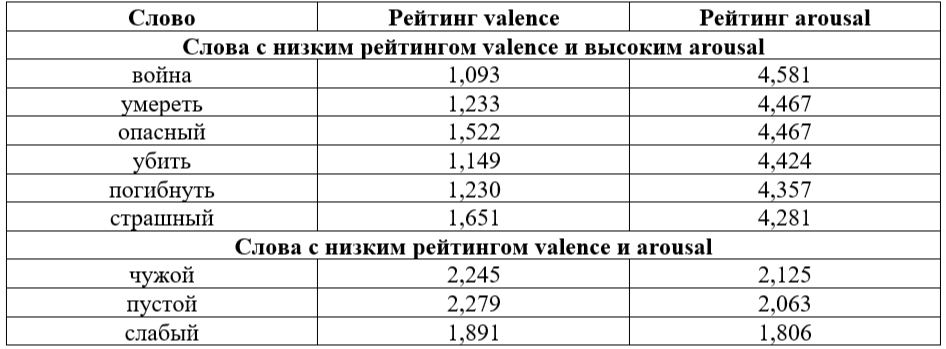
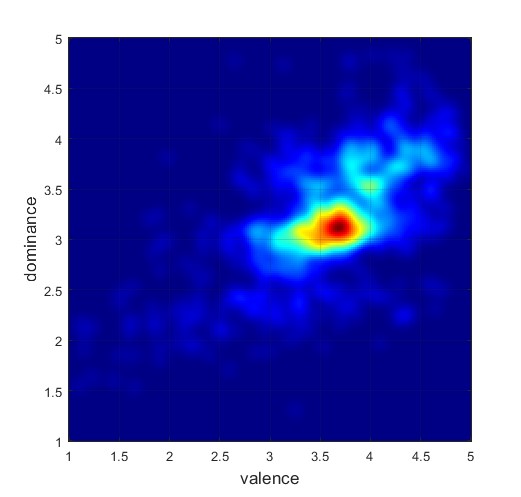
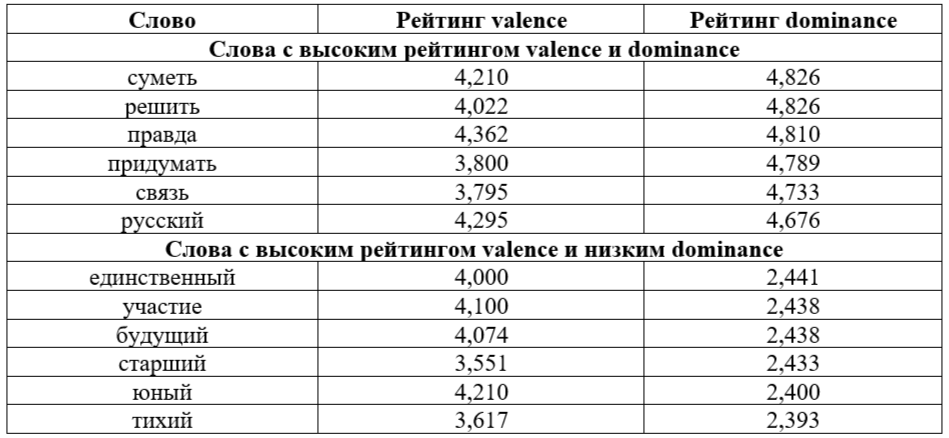
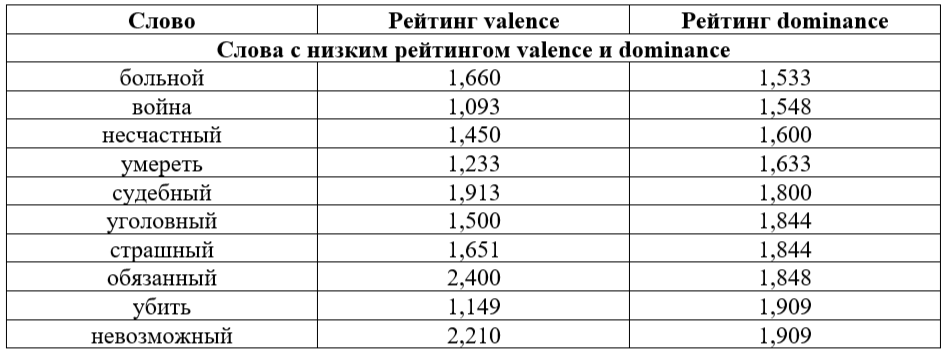
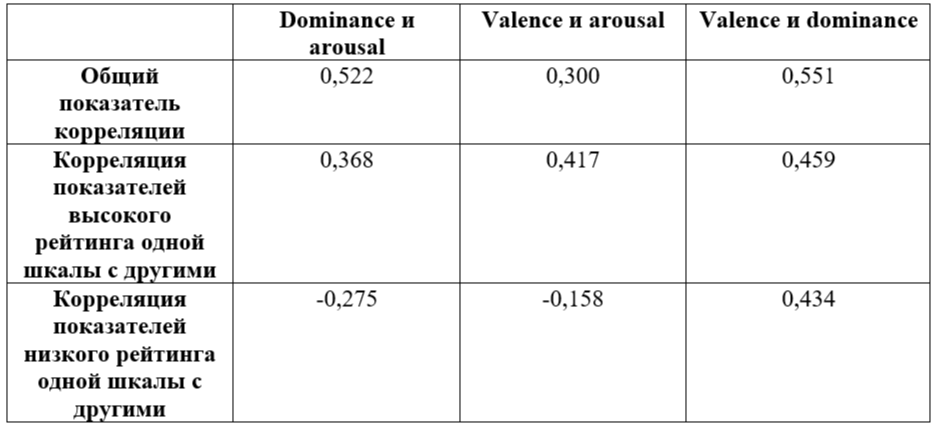

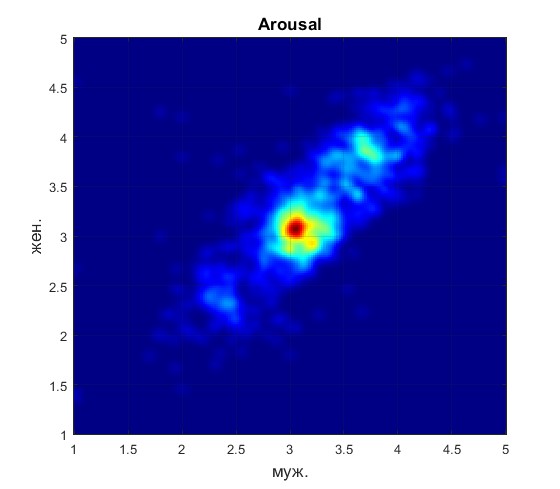
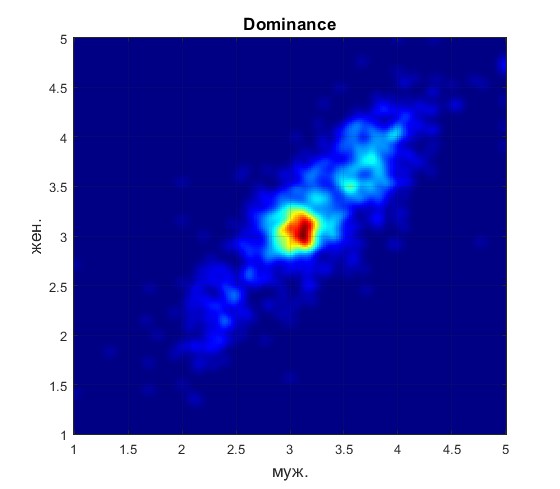
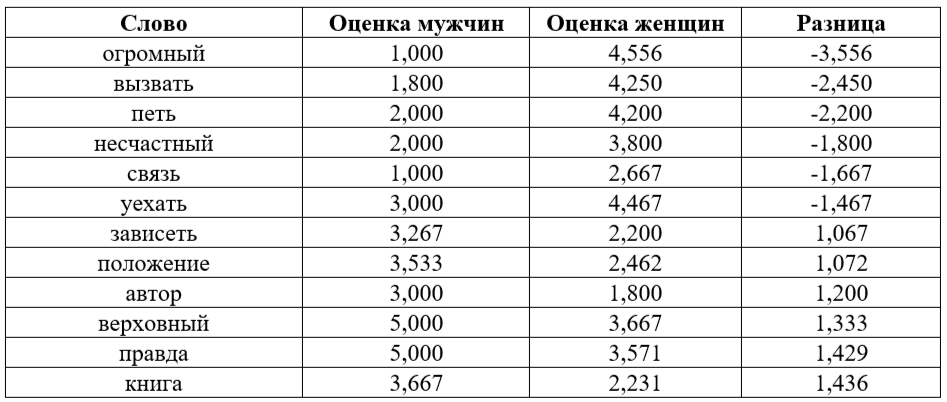
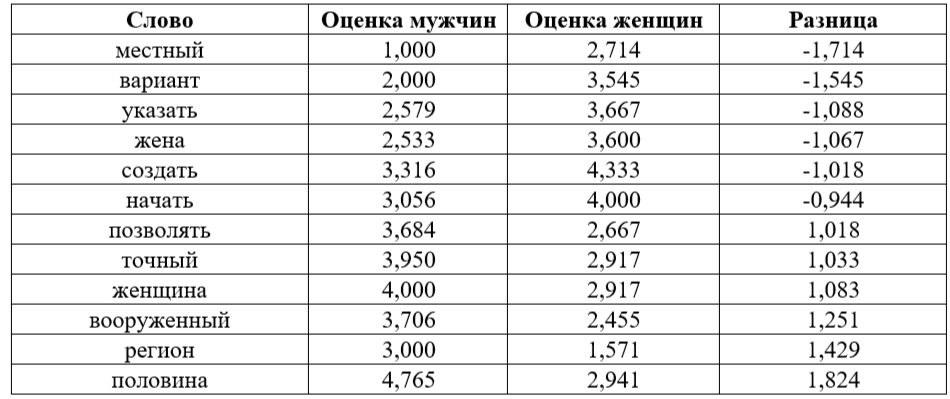

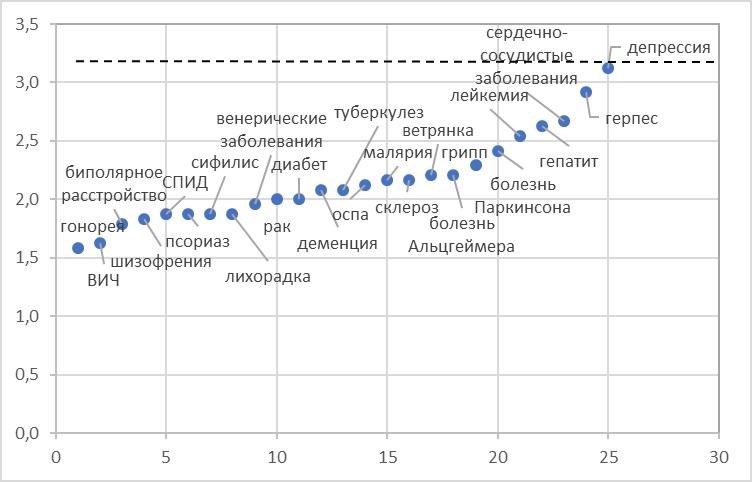
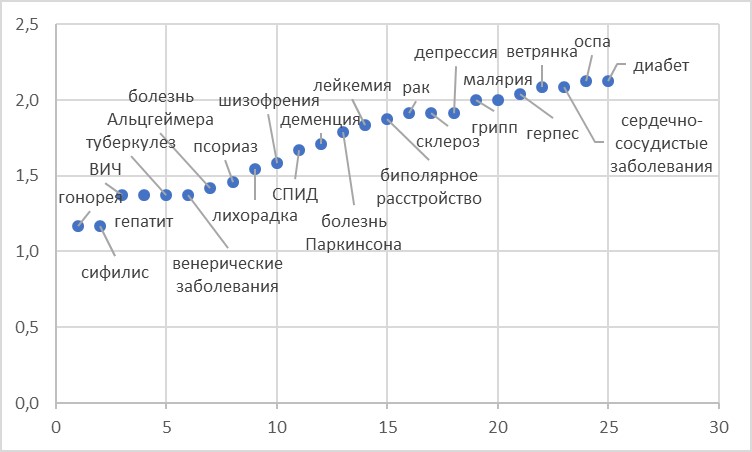

Соловьев В. Д., Вольская Ю. А., Токсубаева А. А. Значения осгудовских параметров для 1000 слов русского языка // Научный результат. Вопросы теоретической и прикладной лингвистики. 2025. Т. 11. № 1. C. 72-106.


















Пока никто не оставил комментариев к этой публикации.
Вы можете быть первым.
Вольская Ю. А. Специфика лексико-грамматических разрядов конкретности и абстрактности в русском языке: экспериментальный подход: дис. канд. филол. наук. Казань, 2024. 264 с.
Григорьев А. А., Пашнева С. А. Оценки по конкретности-абстрактности для 1200 слов русского языка // Теория языка и межкультурная коммуникация. 2022. № 3 (46). С. 33–72.
Малов А. А. Базы данных аффективных норм языка как способ систематизации аффективной лексики // Успехи современной науки. 2016. Т. 1. № 3. С. 141–148.
Марченко О. П. Психолингвистическая база данных для семантических категорий // Экспериментальная психология в России: традиции и перспективы: сборник материалов конференции. М.: Изд-во «Институт психологии РАН», 2010. С. 404–408.
Резанова З. И., Миклашевский З. И. Моделирование образно-перцептивного компонента языковой семантики при помощи психолингвистической базы данных // Вестник Томского государственного университета. Филология. 2016. № 5 (43). С. 71–92. DOI: 10.17223/19986645/43/6
Соловьев В. Д. Словарь русского языка с индексами конкретности/абстрактности / В. Д. Соловьев, Ю. А. Вольская, М. И. Андреева, А. А. Заикин // Russian Journal of Linguistics. 2022. Т. 26. № 2. С. 515–549. DOI: 10.22363/2687-0088-29475
Bellezza F. S., Greenwald A.G., Banaji M.R. Words high and low in pleasantness as rated by male and female college students // Behavior Research Methods, Instruments & Computers. 1986. Vol. 18. Pp. 299-303. DOI: 10.3758/BF03204403
Bonin P., Méot A., Bugaiska A. Concreteness norms for 1,659 French words: Relationships with other psycholinguistic variables and word recognition times // Behavior Research Methods. 2018. V. 50 (6). Pp. 2366–2387. DOI: 10.3758/s13428-018-1014-y
Bradley M. M., Lang P. J. Measuring emotion: The selfassessment manikin and the semantic differential // Journal of Behavioral Therapy and Experimental Psychiatry. 1994. Vol. 25. Pp. 49–59. DOI: 10.1016/0005-7916(94)90063-9
Bradley M. M., Lang P. J. Affective Norms for English Words (ANEW): Instruction Manual and Affective Ratings // Technical report C-1, the center for research in psychophysiology, University of Florida. 1999.
Brysbaert M., New B. Moving beyond Kučera and Francis: A critical evaluation of current word frequency norms and the introduction of a new and improved word frequency measure for American English // Behavior Research Methods. 2009. Vol. 41. Pp. 977–990. DOI: 10.3758/BRM.41.4.977
Brysbaert M., Warriner A. B., Kuperman V. Concreteness ratings for 40 thousand generally known English word lemmas // Behavior Research Methods. 2014. Vol. 46(3). Pp. 904–911. DOI: 10.3758/s13428-013-0403-5
Ćoso B. Affective and concreteness norms for 3,022 Croatian words / B. Ćoso, M. Guasch, P. Ferré, J. A. Hinojosa // Quarterly Journal of Experimental Psychology. 2019. Vol. 72 (9). Pp. 2302–2312. DOI: 10.1177/1747021819834226
Cronbach L.J. Coefficient alpha and the internal structure of tests // Psychometrika. 1951. Vol. 16. Pp. 297–334. DOI:10.1007/BF02310555
Duchon A. EsPal: One-stop shopping for Spanish word properties / A. Duchon, M. Perea, N. Sebastián-Gallés, A. Martí, M. Carreiras // Behavior Research Methods. 2013. Vol. 45. Pp. 1246–1258. DOI: 10.3758/s13428-013-0326-1
Gao C., Shinkareva S. V., Peelen M. V. Affective valence of words differentially affects visual and auditory word recognition // Journal of Experimental Psychology: General. 2022. Vol. 151 (9). Pp. 2144–2159. DOI: 10.1037/xge0001176
Guasch M., Ferré P., Fraga I. Spanish norms for affective and lexico-semantic variables for 1,400 words // Behavior Research Methods. 2016. Vol. 48 (4). Pp. 1358–1369. DOI: 10.3758/s13428-015-0684-y
Imbir K. K. Affective Norms for 4900 Polish Words Reload (ANPW_R): Assessments for valence, arousal, dominance, origin, significance, concreteness, imageability and, age of acquisition // Frontiers in Psychology. 2016. Vol. 7 (JUL). Pp. 1–18. DOI: 10.3389/fpsyg.2016.01081
Kousta S. T. The representation of abstract words: Why emotion matters / S. T. Kousta, G. Vigliocco, D. P. Vinson, M. Andrews, E. Del Campo // Journal of Experimental Psychology. General. 2011. Vol. 140. Pp. 14–34. DOI: 10.1037/a0021446
Kousta S. T., Vinson D. P., Vigliocco G. Emotion words, regardless of polarity, have a processing advantage over neutral words // Cognition. 2009. Vol. 112. Pp. 473–481. DOI: 10.1016/j.cognition.2009.06.007
Kuperman V., Stadthagen-Gonzalez H., Brysbaert M. Age-of-acquisition ratings for 30,000 English words // Behavior Research Methods. 2012. Vol. 44. Pp. 978–990. DOI: 10.3758/s13428-012-0210-4
Lahl O. Using the World-Wide web to obtain large-scale word norms: 190,212 ratings on a set of 2,654 German nouns / O. Lahl, A. S. Göritz, R. Pietrowsky, J. Rosenberg // Behavior Research Methods. 2009. Vol. 41 (1). Pp. 13–19. DOI: 10.3758/BRM.41.1.13
Likert R. A Technique for the Measurement of Attitudes // Archives of Psychology. 1932. Vol. 140. Pp. 1–55.
Marful A., Díez E., Fernandez A. Normative data for the 56 categories of Battig and Montague (1969) in Spanish // Behavior Research Methods. 2014. Vol. 47. Pp. 902–910. DOI: 10.3758/s13428-014-0513-8
Martín-Loeches M. The influence of emotional words on sentence processing: Electrophysiological and behavioral evidence / M. Martín-Loeches, A. Fernández, A. Schacht, W. Sommer, P. Casado, L. Jiménez-Ortega, S. Fondevila // Neuropsychologia. 2012. Vol. 50. Pp. 3262–3272.
Mehrabian A., Russell A. An approach to environmental psychology. 1974. Cambridge: M.I.T. Press. 288 p.
Mohammad S. M. Obtaining Reliable Human Ratings of Valence, Arousal, and Dominance for 20,000 English Words // Proceedings of the 56th Annual Meeting of the Association for Computational Linguistics. 2018. Vol. 1. Pp. 174–184. DOI: 10.18653/v1/P18-1017
Monnier C., Syssau A. Affective Norms for French Words (FAN) // Behavior Research Methods. 2013. Vol. 46 (4). Pp. 1128–1137. DOI: 10.3758/s13428-013-0431-1
Montefinese M. The adaptation of the Affective Norms for English Words (ANEW) for Italian / M. Montefinese, E. Ambrosini, B. Fairfield, N. Mammarella // Behavior Research Methods. 2013. Vol. 46 (3). Pp. 887–903. DOI: 10.3758/s13428-013-0405-3
Moors A. Norms of valence, arousal, dominance, and age of acquisition for 4,300 Dutch words / A. Moors, D. J. Houwer, D. Hermans, S. Wanmaker, Schie van K., A. Harmelen, M. Schryver, J. Winne, M. Brysbaert // Behavior Research Methods. 2012. Vol. 45. Pp. 169–177. DOI: 10.3758/s13428-012-0243-8
Osgood C. E., Suci G., Tannenbaum P. The measurement of meaning. Urbana IL: University of Illinois Press, 1957. 346 p.
Ponari M. Learning abstract words and concepts: Insights from developmental language disorder / M. Ponari, C. F. Norbury, A. Rotaru, A. Lenci, G. Vigliocco // Philosophical Transactions of the Royal Society B: Biological Sciences. 2018. Vol. 373 (1752). 20170140. DOI: 10.1098/rstb.2017.0140
Redondo J. The Spanish adaptation of ANEW (Affective Norms for English Words) / J. Redondo, I. Fraga, I. Padrón, M. Comesaña // Behavior Research Methods. 2007. Vol. 39. Pp. 600–605. DOI: 10.3758/BF03193031
Riegel M. Nencki Affective Word List (NAWL): the cultural adaptation of the Berlin Affective Word List–Reloaded (BAWL-R) for Polish / M. Riegel, M. Wierzba, M. Wypych, Ł Żurawski, K. Jednoróg, A. Grabowska, A. Marchewka // Behavior Research Methods. 2015. Vol. 47. Pp. 1222–1236. DOI: 10.3758/s13428-014-0552-1
Russell J. A. A circumplex model of affect // Journal of personality and social psychology. 1980. Vol. 39 (6). Pp. 1161–1178. DOI: 10.1037/h0077714
Soares A. P. The adaptation of the Affective Norms for English Words (ANEW) for European Portuguese / A. P. Soares, M. Comesaña, A. P. Pinheiro, A. Simões, C. S. Frade // Behavior Research Methods. 2012. Vol. 44. Pp. 256–269. DOI: 10.3758/s13428-011-0131-7
Solovyev V., Islamov M., Bayrasheva V. Dictionary with the evaluation of positivity/negativity degree of the Russian words // Lecture Notes in Computer Science. 2022. Vol. 13721. Pp. 651–664. DOI: 10.1007/978-3-031-20980-2_55
Speed L. J., Brysbaert M. Ratings of valence, arousal, happiness, anger, fear, sadness, disgust, and surprise for 24,000 Dutch words // Behavior Research Method. 2023. Vol. 56. Pp. 5023–5039. DOI: 10.3758/s13428-023-02239-6
Stadthagen-Gonzalez H. Norms of valence and arousal for 14,031 Spanish words / H. Stadthagen-Gonzalez, С. Imbault, M. A. Pérez Sánchez, M. Brysbaert // Behavior Research Methods. 2016. Vol. 49. Pp. 111–123. DOI: 10.3758/s13428-015-0700-2
Syssau A., Laxén J. L’influence de la richesse sémantique dans la reconnaissance visuelle des mots émotionnels // Canadian Journal of Experimental Psychology. 2012. Vol. 66. Pp. 70–78. DOI: 10.1037/a0027083
Van Overschelde J. P., Rawson K. A., Dunlosky J. Category norms: An updated and expanded version of the Battig and Montague (1969) norms // Journal of Memory and Language. 2004. Vol. 50. Pp. 289–335. DOI: 10.1016/j.jml.2003.10.003
Verona E., Sprague J., Sadeh N. Inhibitory control and negative emotional processing in psychopathy and antisocial personality disorder // Journal of Abnormal Psychology. 2012. Vol. 121. Pp. 498–510. DOI: 10.1037/a0025308
Vinson D., Ponari M., Vigliocco G. How does emotional content affect lexical processing? // Cognition and Emotion. 2014. Vol. 28 (4). Pp. 737–746. DOI: 10.1080/02699931.2013.851068
Võ M. L. H. The Berlin Affective Word List Reloaded (BAWL-R) / M.L.H. Võ, M. Conrad, L. Kuchinke, K. Urton, M.J. Hofmann, A. M. Jacobs // Behavior Research Methods. 2009. Vol. 41. Pp. 534–538. DOI: 10.3758/BRM.41.2.534
Warriner A. B., Kuperman V., Brysbaert M. Norms of valence, arousal, and dominance for 13,915 English lemmas // Behavior Research Methods. 2013. Vol. 45. Pp. 1191–1207. DOI: 10.3758/s13428-012-0314-x
Xu Xu, Li J., Chen H. Valence and arousal ratings for 11,310 simplified Chinese words // Behavior Research Methods. 2021. Vol. 54. Pp. 26–41. DOI: 10.3758/s13428-021-01607-4
Исследование выполнено за счет гранта Российского научного фонда № 24-18-00570, https://rscf.ru/project/24-18-00570/